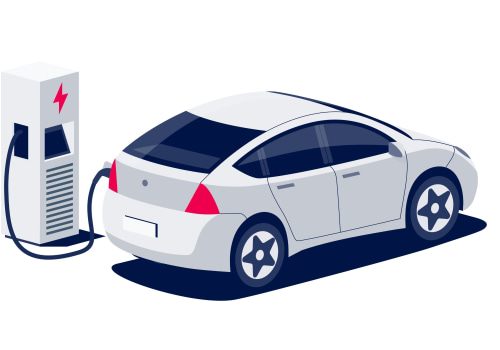Are you looking for a convenient and efficient way to get around town? Local bus services are an excellent option that can provide you with reliable transportation without breaking the bank. From urban areas to rural communities, bus services have become increasingly popular as a way to get from one place to another without the hassle of driving or paying for costly rideshare options. In this comprehensive overview, we'll explore the various benefits of local bus services and the importance of understanding all of your public transport options. We'll discuss how local bus services can save you time and money, as well as how they fit into an overall public transport strategy. Lastly, we'll take a look at some of the common challenges associated with local bus services and how they can be addressed.
So read on to learn more about local bus services and how they can help you get where you need to go!Local bus services provide an important transportation option for many commuters. From cost-effective fares to convenient routes, understanding the ins and outs of your local bus service can make getting around easier. In this article, we'll explore all the key details related to local bus services, so you can better understand how they work. Local bus services can be divided into two main categories: public and private.
Public bus services are owned and operated by municipalities or other government bodies, while private services are owned and operated by private companies. Depending on the city or region, there may be a mix of both public and private services available. The routes and schedules of local bus services vary depending on the city or region. Typically, routes will be set up to cover major areas of the city, connecting popular destinations such as parks, shopping centers, and transportation hubs.
Schedules are usually designed to provide frequent service during peak hours, with reduced service during non-peak hours. In some cities, buses may also offer express services that skip some stops in order to get passengers to their destination faster. The fares associated with local bus services also vary by city or region. Generally speaking, fares are lower than other forms of public transportation such as trains or subways, making them a cost-effective option for many commuters.
Fares may be paid in cash or via a prepaid card, depending on the service provider. Some cities may also offer discounted fares for seniors, students, or persons with disabilities. Popular examples of local bus services include London's iconic red double-decker buses and New York City's MTA bus system. These services offer extensive route networks that cover the entire city, as well as convenient features such as real-time arrival information and mobile payment options.
When comparing local bus services to other forms of public transportation, there are some distinct advantages and disadvantages to consider. On the one hand, buses can be more cost-effective than rail systems, as they typically require less infrastructure and fewer resources to operate. However, they often take longer to reach destinations due to frequent stops and traffic congestion. Buses also offer more flexibility than rail systems since they can access more locations and pick up passengers at any point along their route. Another key advantage of local bus services is the convenience of using apps or websites to plan trips and find out when the next bus is arriving.
Many cities have dedicated apps or websites that allow users to view route maps, get real-time arrival information, and even purchase tickets online. This makes it easier than ever to use public transportation without having to worry about cash or paper tickets. In addition to regular buses, some cities also offer express buses that skip certain stops in order to get passengers to their destination faster. Express buses are typically reserved for longer trips across town or between different cities, and may cost more than regular buses due to their limited stops. Many local bus services also offer additional features that make them even more convenient for passengers.
For example, some buses offer Wi-Fi access or bike racks so that passengers can bring their bikes along for the ride. Other services may have wheelchair lifts or dedicated lanes for buses in order to reduce traffic congestion. Finally, it's important for passengers to be aware of any safety measures that may be in place when using local bus services. Most buses will have cameras installed for security purposes, and drivers may request ID from passengers if necessary.
It's also important to follow any rules set forth by the service provider regarding seating arrangements and proper behavior while on board.
Express Buses & Additional Services
Local bus services often offer different types of buses for different needs. Express buses are one such type, designed to provide a faster and more direct route between two points. Express buses generally offer fewer stops than regular buses, so they are able to travel at a higher speed and can help passengers reach their destination in less time. In addition to express buses, some local bus services also offer additional services.These can include Wi-Fi on board, bike racks for cyclists, discounts for students and seniors, and more. These services can make using public transport more convenient and comfortable for commuters, depending on their needs.
Safety Considerations
When using local bus services, there are some important safety considerations that passengers should be aware of. Firstly, it is important to be aware of any local laws or regulations relating to the use of public transport in the area. For example, many cities may have restrictions on noise levels or other activities while travelling on public transport.It is also important to be aware of any safety measures that are in place on the bus itself, such as the availability of emergency exits, seatbelts, or other safety features. It is also important to be aware of the rules and regulations for the bus service itself. This includes making sure to follow all instructions given by the driver, such as keeping aisles and exits clear, and following the rules for standing passengers. It is also important to be aware of any restrictions on carrying luggage or other items on board. Finally, it is important to be mindful of fellow passengers when using local bus services, and respect their right to privacy.
Planning Your Trip
When it comes to planning your trip with local bus services, there are a number of ways to make it easier.Whether you use an app or a website, you can find the best route and the most up-to-date information about when the next bus will arrive. Apps such as Google Maps and Citymapper make it easy to plan your route and get live updates on when the next bus will arrive. With these apps, you can find the nearest bus stop, check the bus schedule, and even get real-time notifications of delays or changes in your route. Alternatively, you can use websites such as Nextbus to plan your trip.
On this website, you can view the bus schedule for your area and see when the next bus will arrive. This makes it easy to plan ahead and know when to leave for your destination. Finally, many local bus services provide their own apps and websites that are tailored to the specific routes and schedules of their services. These can be a great resource for getting the most up-to-date information about local buses in your area.
Types of Local Bus Services
There are a variety of local bus services available to commuters. These services can be public or private, and may be operated by a municipality or a private company. Each type of service offers different routes and schedules, as well as associated fares. Public buses are typically owned and operated by the local government, providing a safe and affordable transportation option for commuters. Public buses typically run on regular routes and schedules, and fares are often subsidized by the government.These services may also offer special discounts for students, seniors, and persons with disabilities. Private bus services are typically owned by companies that offer transportation services for a fee. These services may be more flexible than public buses, allowing customers to customize their route and schedule. Private bus companies may also provide more luxurious amenities, such as onboard entertainment and Wi-Fi. Municipality-operated bus services are usually offered in larger cities. These services can be similar to public buses, but they may have more specific routes and fares tailored to the needs of local commuters.
Municipality-operated bus services may also offer special discounts for students and seniors. In addition to these types of bus services, there may also be other types available in your area. For example, there may be shuttle services that provide door-to-door transportation, or on-demand services that allow customers to book rides on demand. Before choosing a local bus service, it's important to research all of the options available in your area to find the best fit for your needs.
Advantages & Disadvantages of Using Local Bus Services
Local bus services are a popular and cost-effective option for many commuters. They can offer a convenient way to get around, with routes that are easy to access and often run frequently.However, there are some key advantages and disadvantages to consider when deciding whether to use a local bus service. One of the biggest advantages of using local buses is the cost. Bus fares tend to be much cheaper than other forms of public transportation, such as rail systems. This can be particularly beneficial for people who need to travel on a regular basis and don’t have the budget to invest in other forms of transport.
Another advantage of using local buses is that they are often quicker and more direct than other forms of transport. For example, if you need to get from one side of a city to another without going through the center, a bus might be the quickest and most direct route. However, there are also some disadvantages to consider when it comes to local buses. For example, they can be crowded at peak times, making it difficult to find a seat or get on in the first place.
Additionally, they may not always be reliable, as delays and cancellations are not uncommon. In comparison, rail systems tend to be more reliable than buses, with fewer delays and cancellations. They also tend to have more comfortable seating and more modern amenities such as air conditioning and WiFi. However, they can be more expensive than buses and may not always be the most direct route. Local bus services offer a convenient and cost-effective way to get around.
From express routes to additional services, there are a variety of options to choose from. Planning your trip ahead of time can help ensure an enjoyable and safe experience. Safety considerations should always be taken into account when traveling with a local bus service. Overall, local bus services are an important transportation option for many commuters and can help make getting around easier. In conclusion, local bus services provide an important transportation option for many commuters.
With cost-effective fares and convenient routes, understanding the ins and outs of local bus services can make getting around easier. This article has explored all the key details related to local bus services, so readers can better understand how they work and why they should consider using them for their transportation needs.











Leave Message